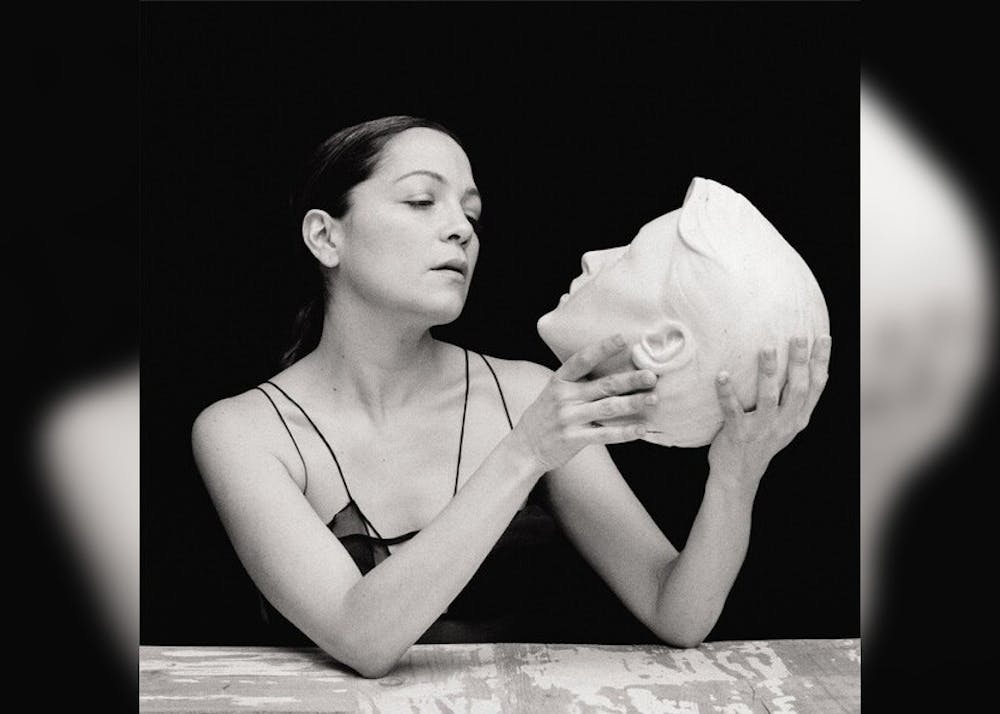As one of Mexico’s most well-known and successful singers, Natalia Lafourcade has spent the last seven years producing homages to Latin America’s greatest musicians, such as Agustín Lara and Roberto Cantoral. Since 2015’s “Hasta la Raíz,” Lafourcade had not released an album of entirely original music until the release of “De Todas las Flores” on Oct. 27.
Her newest work demonstrates with striking ability the influences of these artists, utilizing the traditions of bossa nova, cumbia and jazz heavily in her refined sound.
The first song, “Vine solita,” begins with a string quartet playing a brief but foreboding piece, setting a morose tone that isn’t matched by the rest of the song. At the piece’s conclusion, a nylon guitar takes over, supporting Lafourcade’s even voice at a slow lilt.
The energy remains low for a while here, with the guitar providing consistent but sparse rhythm. Just past the halfway point, piano begins to creep in, followed by bass and twangy electric guitar. It’s only a slight build, but it makes the song feel much wider and warmer.
The album quickly turns on the groove on its title track, “De Todas las Flores.” The instrumentation remains largely the same, but the style has changed dramatically with composition akin to a Jobim tune.
Related: [Indie punk pop EP ‘party at avery’s’ helps listeners through life transitions]
The bossa nova groove builds through the first verse, morphing from a sole guitar into a complex texture including bass, piano, electric guitar, percussion and beautifully-harmonized backing vocals. And it’s the harmony of this song that gives it its impact, with the guitar guiding the ensemble through haunting minor chord changes.
“Llévame viento” begins with a piano introduction that is equal parts “Clair de Lune” and “Strange Fruit” before Lafourcade enters, rubato with the ensemble improvising around her. The song maintains this unstructured soundscape for almost four of its six minutes, gradually adding instruments — piano, flutes, saxophones — in an intricate dance following Lafourcade’s lead.
When it fades away, it’s replaced by a heavy, lumbering beat that takes the listener into the last verse with a novel sense of structure. This sudden organization in a previously chaotic song makes its ending feel calm and comfortable.
“Maria la Curandera” gets more intense than the preceding tracks. Similarly, though, it builds its texture up from little, beginning with the percussion and adding synths, horns, backing vocals and an electric guitar towards the end.
Although the tune escalates, a relaxed tempo keeps it in check, retaining a strong groove throughout. One might complain that it stagnates, as it is somewhat repetitive and the song isn’t brief, but the texture varies enough that it doesn’t become boring.
Related: [COLUMN: cleopatrick’s ‘DOOM’ briefly showcases a renewed and vital sound]
Lafourcade shows some of her jazz influence on “Mi manera de querer.” The rhythm section is heavily reminiscent of Latin styles of jazz as are the horns that open the tune and return later. Backing vocals and guitar comping call to bossa nova, whose themes are featured prominently throughout the entire album.
The album closes on “Que te vaya bonito Nicolás,” a light ballad that begins with cascading piano chords that fade to give way to soft, high guitar. The sung verses have rhythm, but their phrasing is left ambiguous, giving the tune a somewhat slippery form.
When the other instruments enter halfway through, it creates an airy and hopeful texture that brings the tune from its muted mode into a much more grandiose one with swelling bass drum rolls and effervescent string runs.
The magic of this album is in its ability to build a song up from nothing. Practically every song begins with one or two instruments and gradually crescendos, adding voices and complexity to create a satisfying arc.
This style of composition coupled with Lafourcade’s rich roots in traditional Latin American music create beautiful, evolving pieces that teem with life. “De Todas las Flores” likens to a garden, living and breathing, whose allure is in its detail.




